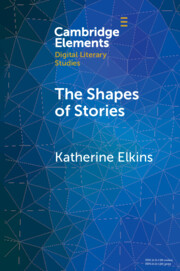Element contents
The Shapes of Stories
Published online by Cambridge University Press: 01 July 2022
Summary
- Type
- Element
- Information
- Online ISBN: 9781009270403Publisher: Cambridge University PressPrint publication: 04 August 2022
References
- 14
- Cited by

